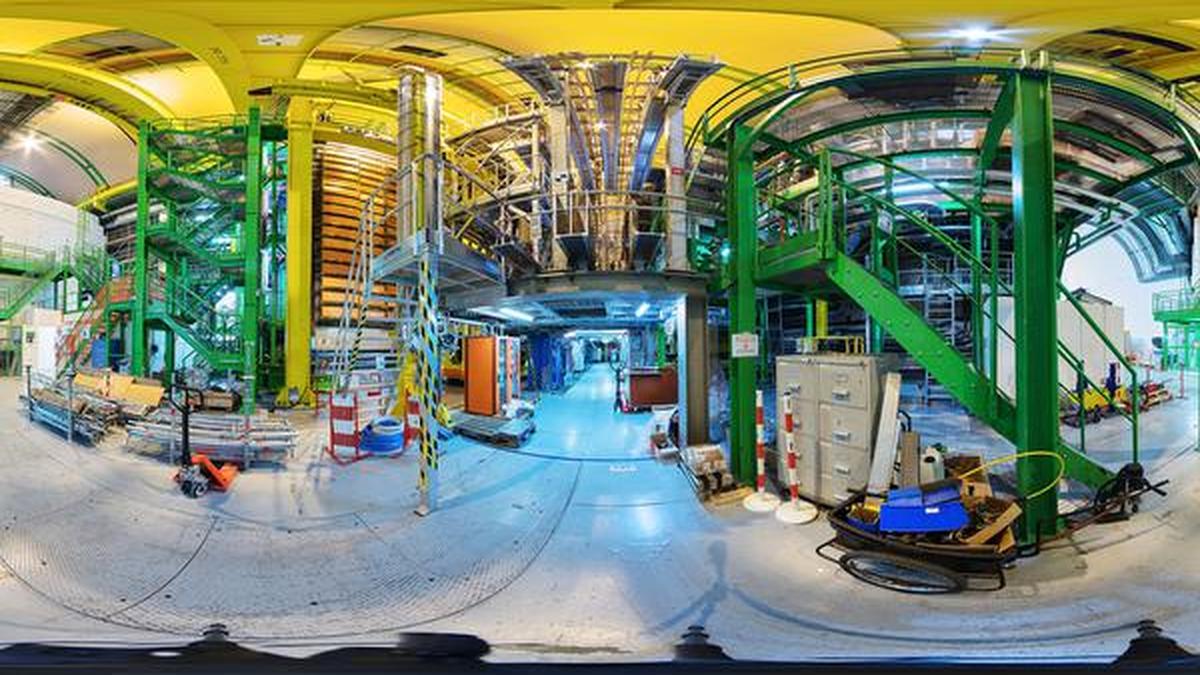Matter-Antimatter Asymmetry

- 24 Jul 2025
Context:
One of the most fundamental questions in cosmology and particle physics is: Why does the universe contain more matter than antimatter? The Big Bang, which occurred around 13.8 billion years ago, should have produced equal amounts of matter and antimatter. However, the observable universe today is overwhelmingly composed of matter, with antimatter being nearly absent except in trace amounts created in high-energy environments or particle accelerators. This puzzling imbalance—known as baryon asymmetry—continues to challenge scientists worldwide.
Recent breakthroughs, particularly a discovery made on July 16 at the Large Hadron Collider (LHC) in Europe, have added a significant piece to this puzzle. For the first time, scientists observed CP violation in baryons—heavy subatomic particles such as protons and neutrons made of three quarks. CP stands for Charge Conjugation (C) and Parity (P), which together form a symmetry principle stating that the laws of physics should be the same if a particle is replaced with its antiparticle and viewed in a mirror. A violation of this symmetry implies that matter and antimatter behave slightly differently—a necessary condition for the observed dominance of matter.
The experiment focused on a baryon called Λb0 (lambda-b-zero), which contains one up quark, one down quark, and one bottom quark. Scientists at LHCb measured the decay rates of Λb0 and its antimatter counterpart (Λb0-bar) into a proton, kaon, and two pions. The results showed a CP asymmetry of about 2.45%, with a statistical significance of over 5 sigma, a threshold used in particle physics to confirm a discovery. This historic observation is the first evidence of CP violation in baryons and expands our understanding beyond earlier CP violation detected in mesons (quark-antiquark pairs).
While this asymmetry is still insufficient to fully explain the matter-antimatter imbalance, it marks a critical advancement. It suggests that there could be undiscovered sources of CP violation in other particles or interactions that the Standard Model of particle physics does not yet account for. Theoretical and experimental physicists are now exploring whether other decays exhibit similar asymmetries and whether new physics—beyond the Standard Model—might be at play.
Parallel efforts are also underway deep underground. In Italy, physicists are assembling detectors 1.4 km below the mountains to observe neutrinoless double beta decay, a hypothetical nuclear process that, if confirmed, would indicate that neutrinos are Majorana particles—particles that are their own antiparticles. This would offer a different mechanism for matter creation without equivalent antimatter, further contributing to the asymmetry.
Moreover, U.S. institutions such as the Department of Energy (DOE) support advanced antimatter research through projects like the Deep Underground Neutrino Experiment (DUNE) and experiments at Brookhaven’s Relativistic Heavy Ion Collider, which have created antimatter versions of elements such as helium.
In conclusion, the recent detection of CP violation in baryons and continued investigations into rare decays and neutrino properties are gradually illuminating the deep cosmic mystery of why something exists instead of nothing. This line of inquiry not only bridges particle physics and cosmology but also exemplifies human curiosity’s power in probing the origins of existence itself.
